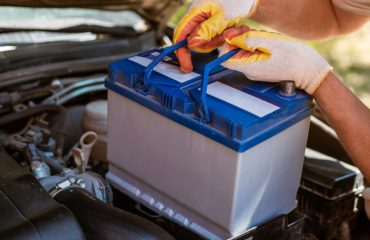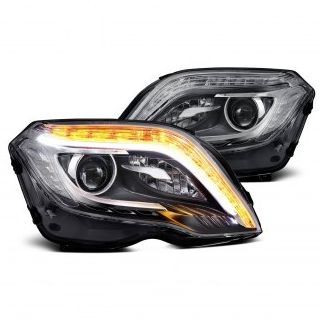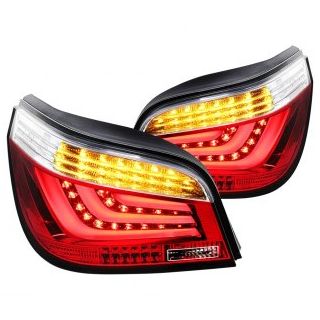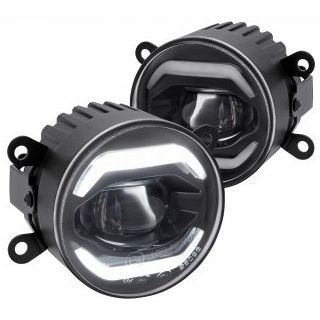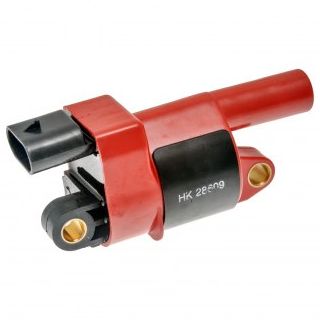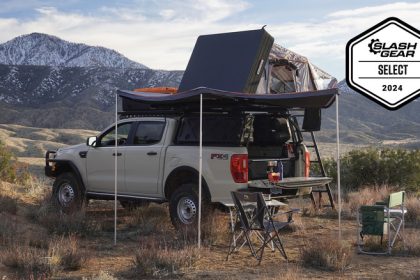
EDITORS’ RATING : 8 / 10
- Rugged hardshell with compact footprint for maximizing storage
- Spacious and roomy when fully erected
- Easy enough to unfold and pack up
- Insulated well enough for wintry nights
- Tall aerodynamic profile when folded
- Some plastic outgassing smells
- Needs a clear insulated window for watching the sun rise
- Competitively priced, but still pretty expensive
On Instagram, bolting a rooftop tent onto any car seemingly, as if by magic, produces an “overlanding” rig. But for real overlanders who plan to get off the grid for days, weeks, or months at a time, every tradeoff made in the name of more comfortable sleeping arrangements can make all the difference in the world. Today, the number of different kinds of rooftop tents available on the market can seem entirely overwhelming. We’re way past roughing it in the wild, but as competition in the overlanding industry heats up, prices for consumers come down—strange how many ride around Los Angeles on cars, trucks, and SUVs without a visible speck of dust anywhere, though…
Amid a growing crowd of options, Roofnest’s new Condor Overland 2 design combines a compact folding design, a sleeping floorplan that’s on the larger side, and a competitive price point. But more features means a greater chance of frustrating complexity, so I accepted an offer to take the Condor Overland 2 out for a night camping with an eye on how a RTT’s engineering contributes to life outdoors.

I went into the experience as a fully admitted RTT skeptic, an Eagle Scout who spent at least 25 nights a year from age 11 to 17 sleeping in flimsy ground tents. I had slept in two RTTs previously, but always in a demo situation—I’d never been the one who actually set the tent up or folded it back up. Rather than needing to pick my own overlanding vehicle, the Condor arrived as mounted on a fully built Ford Ranger, and somewhat ironically, this would be my first time driving the fifth-gen Ranger, as well. Just in case, I packed all my old gear into the truck and headed out for a night of frigid camping where the desert meets the mountains north of Los Angeles.
Design decisions among rooftop tents
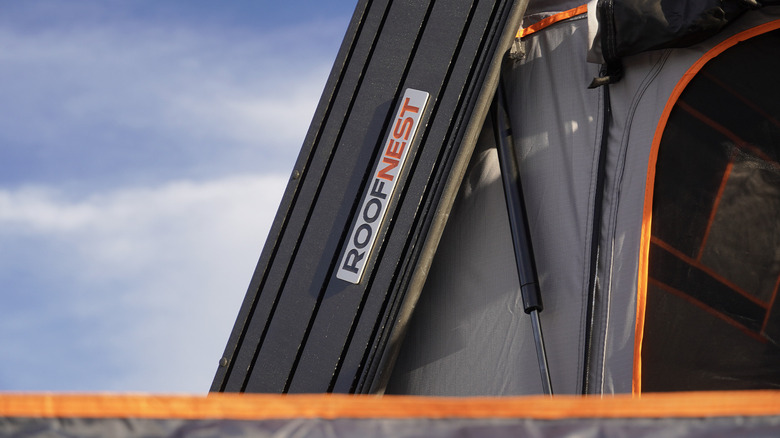
Rooftop tents tend to fall into two categories: single-raise or collapsible-folding. Single-raise designs include a wedge-shaped clamshell with one hinge, typically at the front of the vehicle, or a flat roof that lifts straight up. Collapsible folding options run from simple to massively complex, and the Condor Overland 2 fits more into the simpler side of this category.
The design mounts best when unfolding from the side of a vehicle, which leaves space around the tailgate of a truck or rear door of an SUV. This Roofnest comes with a hard shell, rather than a soft-pack bag, which serves as one wall of the tent while the rest of the nylon surfaces fold out and expand once the shell opens upward.
Even before playing around with the Condor, I definitely preferred the idea of a hardshell RTT, in terms of durability, protection from the elements, wind noise, and style. The trade-off, obviously, is the additional cost and weight. And I wondered how difficult re-stuffing everything into the hard shell might be after a night in the tent itself.
Specs and stats of the Condor Overland 2
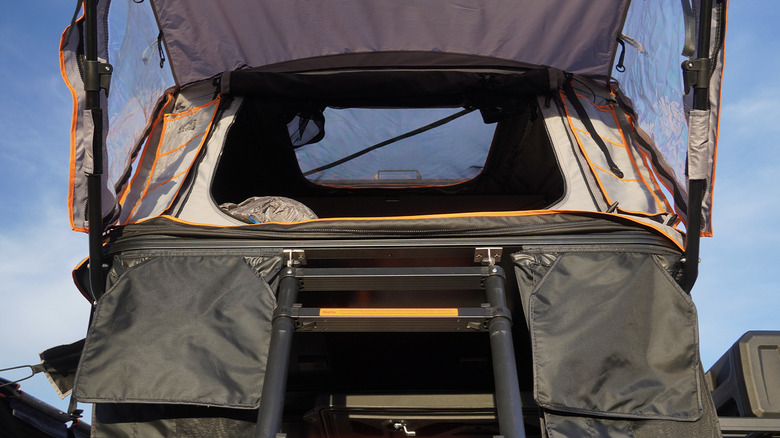
A quick perusal of rooftop tents available from any company reveals how much specs and stats come into play. The Condor Overland 2’s hardshell and beefy mounting system contribute to a total weight of 190 pounds. When closed up, the whole setup measures 60 inches long by 48 inches wide, and 12 inches tall.
Unfolded, the bed size winds up at 81 inches long and 53 inches wide, with a two-inch thick mattress and a maximum sit-up headroom measurement of 40 inches. The mid-range $3,745 pricetag includes a 7.5-foot ladder, a ground mat just in case, an LED light package, and a bedding storage duffle bag.
Unfolding the Roofnest Condor Overland 2
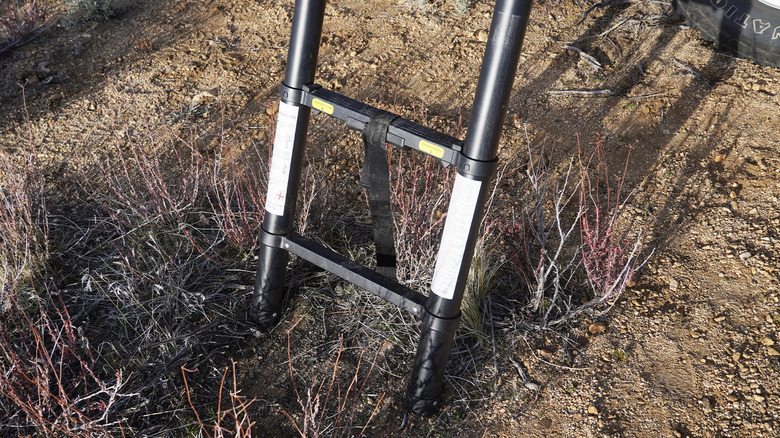
After blasting up the 14 freeway into the Mojave Desert, I turned the Ranger off-road and set out to find a relatively flat spot to car camp—with a good view, of course. I figured at least being close to level might help with the ease of setup, though devotees of rooftop tenting will often air down tires, climb up on rocks, or line up MaxTrax to level out the sleeping platform. Luckily, I found a good location that required none of the above to get close enough to level by eyeball (wondering, all the while, how good my eyeball would actually do versus the four-foot level I brought along for science).
I know from years of experience that setting up any tent for the first time takes inexorably longer than anytime thereafter. Did I watch the walkaround instructional video that Roofnest sent me beforehand? Of course not! But still, the whole process took only about ten minutes, which I’d qualify as not at all terrible for an inaugural outing.
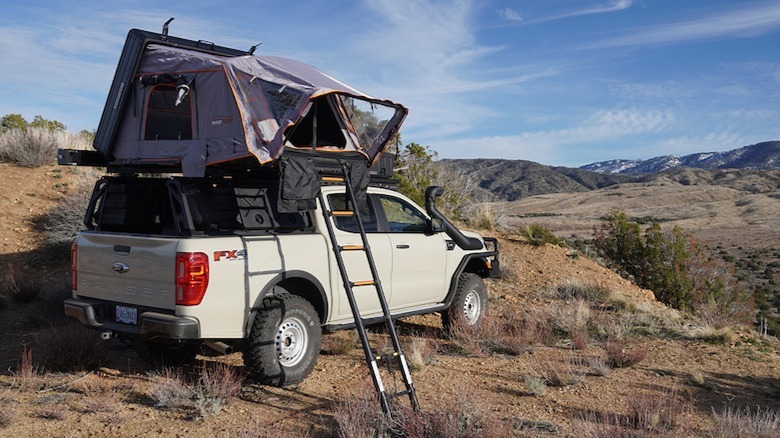
First, I unclamped the hardshell upper via a couple of velcro straps that then double as pull handles. The lid almost immediately lifted to maybe 30 degrees above level, exposing the feet of a latter within. Pulling out the ladder began to unfold the rest of the platform and walls, until I noticed an elastic string that I needed to loop under everything beforehand (more on that elastic string later). With another hard pull, the ladder looped up and over, bringing the fold-out sleeping platform with it and simultaneously erecting an entryway cover.
I set about getting the ladder situated in an uneven clump of baby chaparral—an expert might take the ladder’s location into consideration before parking, but I had been focused mostly on getting the truck level with good lighting for photography as the sun began to set. Then I noticed that while I had fiddled with the ladder at about a 70-degree angle, the sleeping platform had hinged back up a bit.
Turns out, before you put weight on the ladder, definitely make sure each clasping run clicks into place. Luckily, I only dropped a few inches with my first step up. Even more luckily, those few inches popped the sleeping platform into place, too, and I climbed up in to take a look inside the Condor Overland 2 for the first time.
Discovering features from the inside out
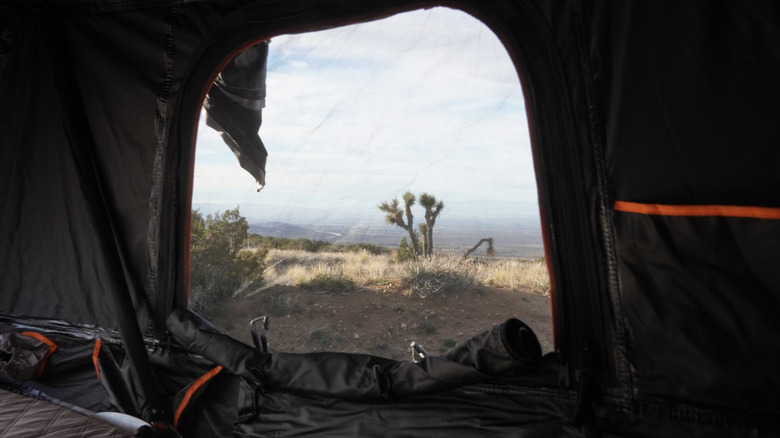
I rolled up familiar window flaps, hooking toggle through loops to let a bit more light into the RTT. Of course, in my haste to check out the Roofnest, I made the rookie mistake of not taking my boots off immediately and dropping them into the provided boot bags that conveniently hang to each side of the ladder (with mesh to let any dirt drop out and a velcro top to prevent weather intrusion, no less).
I played with the main closures, zippers for mesh screens, and roll-up toggles on the skylight, two windows, and main door. A series of LED lights with USB ports for batteries I failed to bring along seemed nice, and two access ports for propane heaters on each side presumably allow for the proper routing of heater hose with the tent mounted toward any direction on the truck.
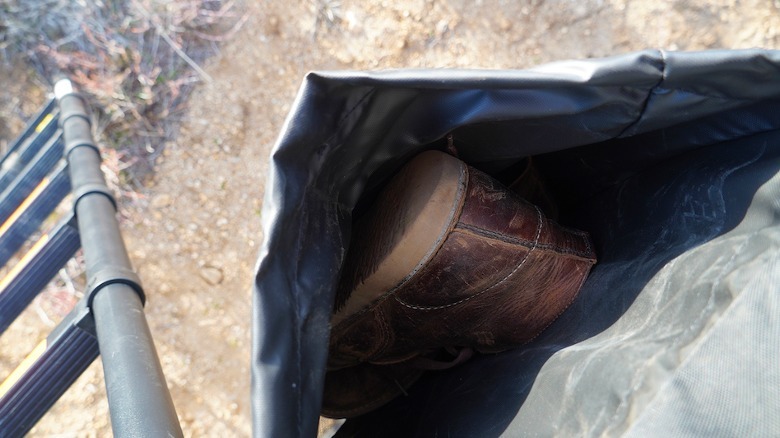
Next, I noticed a few clasps on the entryway’s supports, which pulled out further to allow a bit more headroom. More importantly, doing so also tightened up each other wall and the ceiling nylon, which I figured might help with wind noise that can so easily make a night in the Mojave absolutely miserable. That prompted a question in my mind about guy-wire locations on the exterior, but I surprisingly never found more ways to make the exterior walls more taut. A bit of jury-rigging (pun fully intended) might do the trick, I suppose.
With my duffel back up in the RTT, I pulled out that level and commended my eyeballing skill. Then I unstuffed a thick sleeping bag and pillow before stretching out to see how the reported length of 81 inches might work for my 6’1″ lanky frame. I felt roomy all stretched out longitudinally, and even more so when lying at the diagonal. On the end of the bed where my head and pillow sat, a few more inches of usable space beneath the hard folding clamshell actually make the real-world length more substantial. Every bit counts!
Time to set up the rest of camp
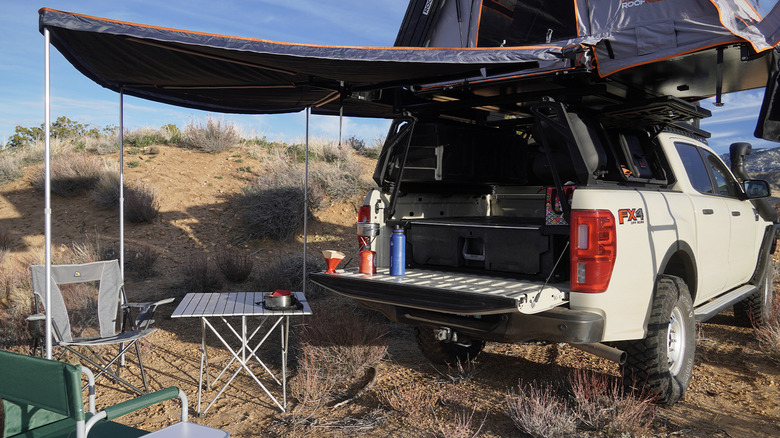
Setting up the rest of camp took me about as long as usual, for car camping. Mostly because the 270-degree Roofnest awning seemed to lack a last strap to pull all the way out and taut, so I ended up having to do some jury-rigging after all, using a random strap from the tent itself. Otherwise, the rest of the Ranger’s build-out made life easier than my normal version of budget-minded loading up a 1998 Mitsubishi Montero.
The Leitner racks work well with boxes that open to the side, and the Decked drawer system pulls out easily. Putting the tent on the top rack allows for more storage everywhere, which is kind of the point considering all the camping gadgets to tempt you off-the-grid, but most of all the Ranger’s teeny-tiny backseat. I pulled out a table and some chairs to set up the scene for pics, then thought some coffee sounded nice to help stave off the expected evening chill.
Sleeping in the Condor’s perch
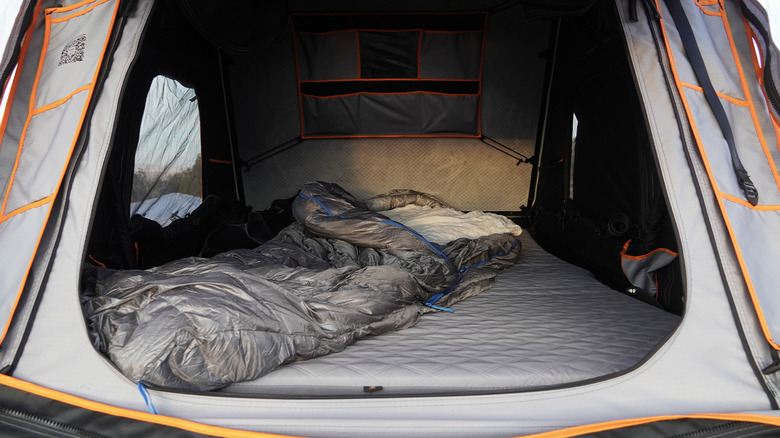
That silvery Stone Glacier sleeping bag I brought, the Chilkoot 0º, seemed like probably overkill for a night when the forecast predicted temps to drop slightly below 40 Fahrenheit. But I tossed a down comforter up into the Condor before bedtime anyway, just because I typically prefer to sleep with the bag opened all the way up as a base layer. In my own truck, I’d have fitted sheets for the Roofnest mattress and maybe even just normal bedding instead of a sleeping bag.
Night fell, and in the dark I climbed up, remembering to slip my boots into the shoe bags, and proceeded to close up all the windows to keep the Condor as insulated as possible. Darker than dark, the interior now resembled the anechoic chamber scientists at my college used to perform experiments on drug-addled undergrads… But that’s a whole different story.
Clicking on my headlamp, I arranged the sleeping bag and comforter, settled back onto my pillow, and read a few pages of Mike McMahan’s hilarious book Adventures in Baja! while constantly in the back of my mind considering the call of nature—a serious subject for rooftop tent dwellers. After all, the struggle doesn’t get much worse than having to climb down a ladder, mind fully addled and groggy, in the dark, in a time of serious need.
Good morning after a good night’s sleep
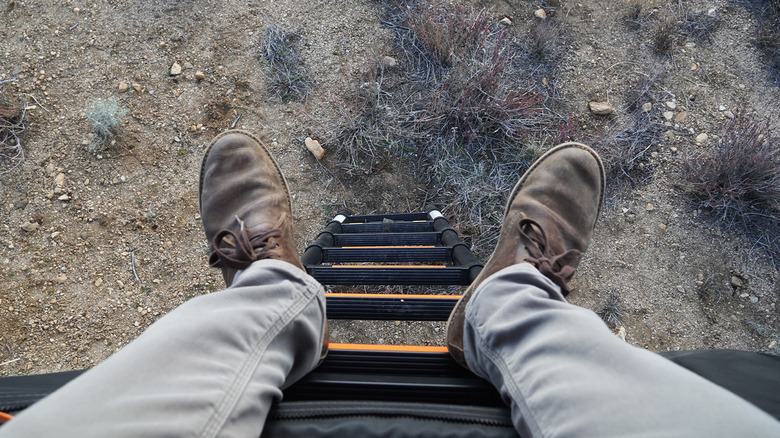
Luckily, the two-inch memory foam mattress provided just enough support to let me sleep through most of the night. I had, however, purposefully avoided beverages before bed—assuredly not, I should note, my typical camping routine (but maybe that’s a health benefit inspired by RTT life, after all). Then, at about 5 am, I awoke to the sounds of padded feet and audible breathing. Something good-sized down there, sniffing around quietly but deeply. Coyote, stray dog, mountain lion? As usual when the fever dreams set in while sleeping in the middle of nowhere, I wished I’d brought a shotgun. This time around, I reassured myself that I was sleeping happily seven feet off the ground.
Talk about a serious item for the plus column! Until I started wondering what I might have left out on the truck. But finally, whatever that was padded away into the night and I dozed off again until my Whoop strap buzzed me back to life at my usual 6:30 am just-in-case alarm time. Strangely, still in the dark of night, though.
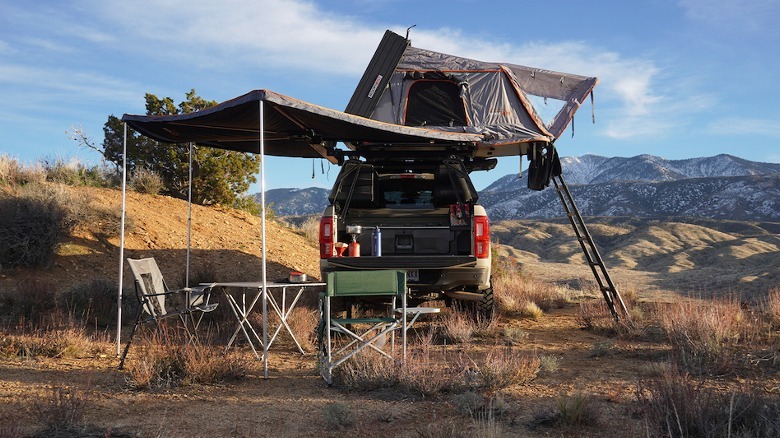
Oh right, I realized, as bleary-eyed and blearier-minded I started pulling down zippers to let the morning sun creep in. Not an item for the plus column, waking up in the dark just trying to keep the warmth in and, thereby, missing sunrise. Maybe an insulated bit of clear plastic or two might be nice, if anyone at Roofnest has made it this far down into the story. On the other hand, I never felt cold enough to need to warm up my clothes in the sleeping bag before slipping on pants and a sweater. I opened up the main door, a few deep breaths of bracing air helping to clear the fog, and slipped on my boots. Time for more coffee.
Folding up and rolling out
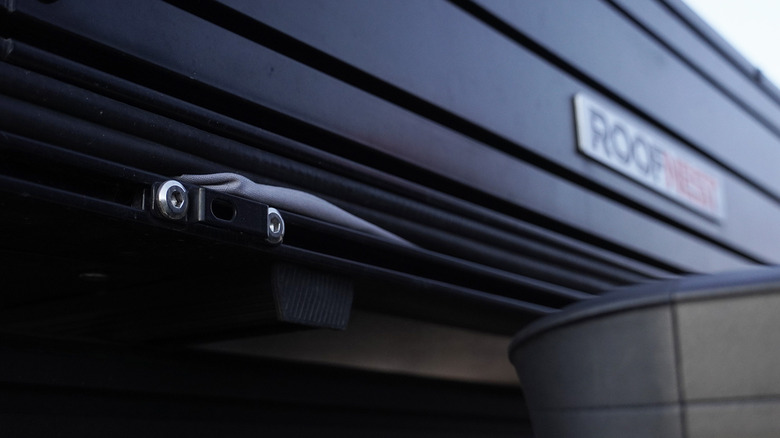
A few hours later, the time arrived to pack the Condor back up and roll back into town. I unfurled the window coverings again, leaving them unzipped by a few inches in the hopes of allowing air to escape, then pushed up the ladder. A nifty set of catches automatically release when pushing up from the bottom, and about halfway up the folding sleeping platform began to hinge upward, too. Then I remembered the elastic string (see, told you it would come up later!), which loops up into the tent fabric to help keep every last fold inside the hard shell.
A long strap dangles from the hard shell, requiring a good amount of muscle to close down slowly, as the air escapes. A few pieces of fabric still caught and after maybe six minutes of shoving, folding, and stuffing later—easier from the tailgate side than the cab side, where I stood on the tire—I yanked on the velcro straps again and relatched the roof into the closed position. Almost easy, but not quite! The closing process would definitely smooth out over the next few times, I figure.
An overlanding Ranger built to the hilt
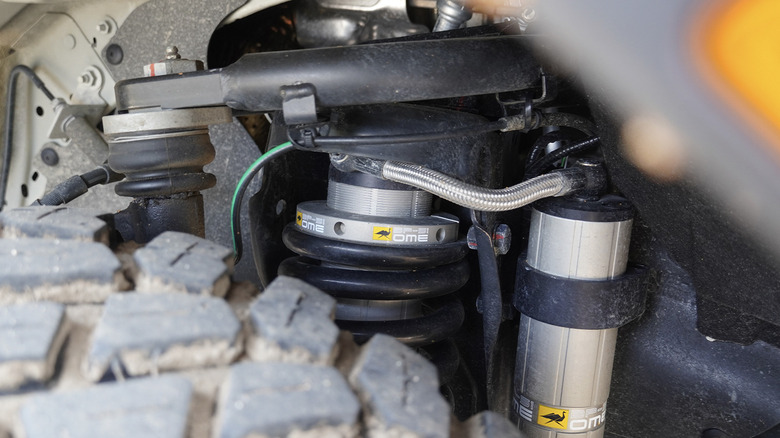
Driving back out the rutted dirt road to civilization, the Ranger handled the terrain, as well as the additional weight of a full overland build, with absolute aplomb. Big Firestone Destination M/T tires combined with a full Old Man Emu suspension upgrade probably helped a ton. But even on the worst sections, no clunks nor top-heavy tilt made the drive annoying.
And out on the highways and eventually freeways of Los Angeles, a surprising lack of wind or tire noise also blew my mind—especially given the upright Leitner boxes and 12-inch height of the Roofnest, since aero usually seems so bad on overlanding builds. Of course, with a Ford Performance tune on the 2.3-liter inline-four, Roofnest’s rep told me to expect about 13 miles per gallon thanks to the weight and aero drag. That doesn’t quite compare favorably with my 1998 Montero, even if the driving experience and capability sure do.
Thoughts on RTTs in general
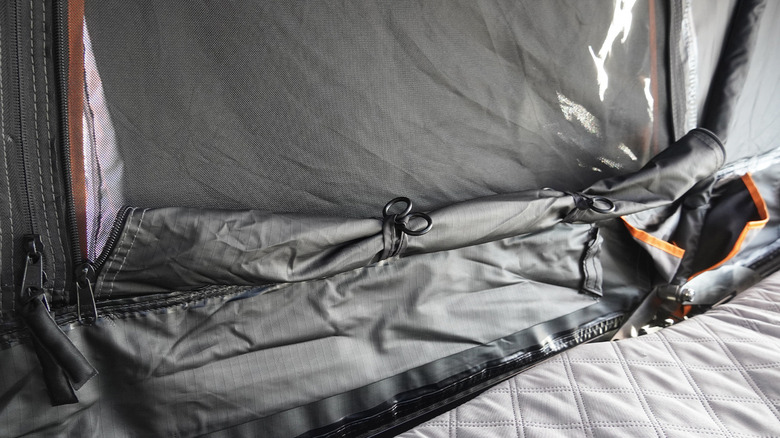
The whole drive home left me wondering about rooftop tents in general, and the Condor Overland 2 in particular. Many of my gripes about the Condor apply to RTTs as a concept, since the combination of added weight in the worst place on a vehicle, unfortunate aerodynamics, and high cost all put me off. But I’m not going camping for the Instagram clicks, and these challenges are exactly what every single RTT company needs to solve in their own creative way.
Even on an inaugural trip, the Condor’s shell, folding design, and rigging materials seem fairly durable, though everything could probably use a few days to air out some of the plastic outgassing. A few of the hook-and-toggle locations also didn’t quite make sense, lined up loop to loop instead. While I thought the truck looked tall, for a big overlanding build with extra boxes, the compact closed position seems ideal for maximizing storage elsewhere.
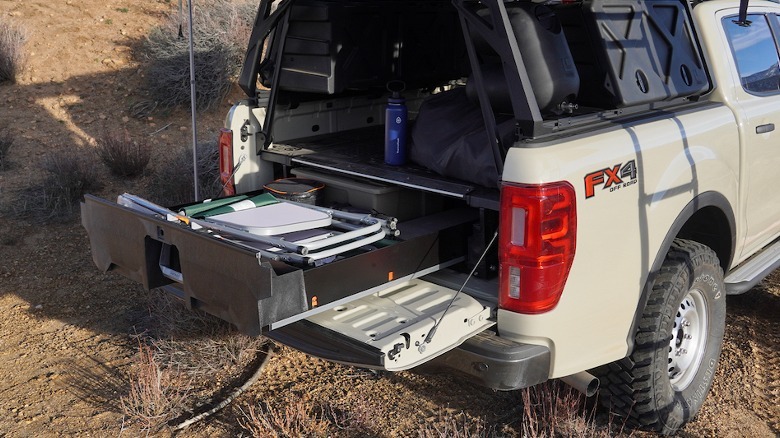
If I built this Ranger, I’d probably prioritize a lower profile up front, with no Leitner boxes above the cab and maybe a wind deflector up front to help reduce drag. Personally, I prefer the idea of an enclosed SUV with a clamshell-style RTT up there, to maximize storage without dust getting on everything while keeping the design as low as possible.
However you do it, get out and camp
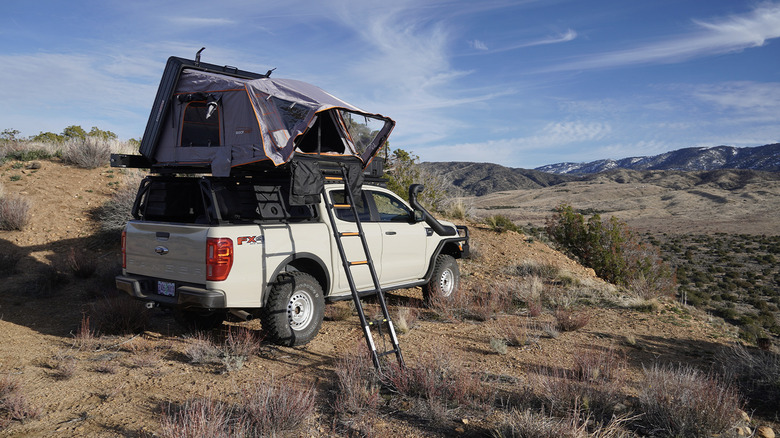
In those regards, Roofnest’s own Falcon 2 XL looks pretty good, with an 86×58-inch bed and only 6.5 inches tall when folded. Then there’s the GFC Platform, with a 90-inch bed and six-inch folded height, which can also completely replace a roof rack and rail system—but costs twice as much. The fact that nobody makes an affordable, lightweight, stripped-out clamshell with an eight-foot bed and hard walls, mountable straight onto rain gutters, just seems silly in an industry so otherwise spoiled for choice.
As an Eagle Scout with plenty of camping trips under his belt, I can proclaim that everyone in today’s society needs to spend more time outdoors. If the current crop of rooftop tents can make even a tiny dent in that fact, all the better—but I still don’t think any company can say they have yet cracked the code. I want easier and quicker to open and close, lighter with improved aerodynamics, and most of all, cheaper. Until such a time as that snake-oil dream tent arrives, this RTT from Roofnest at least checks off many of the most important boxes for as many overlanders as possible.
